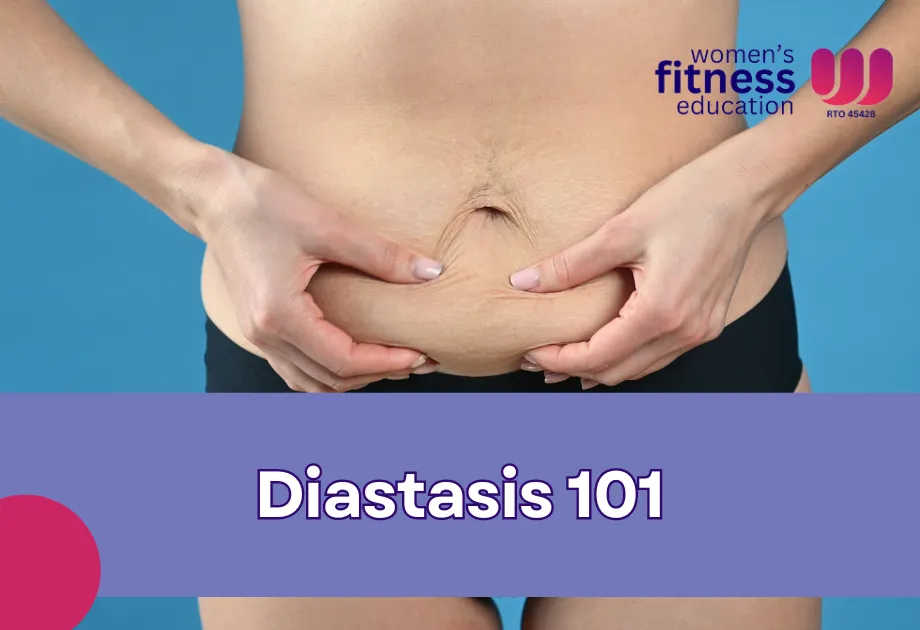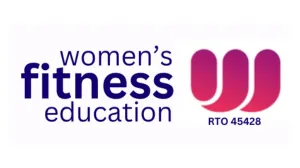Women's Fitness Blog

Diastasis 101: Understanding What It Means for You and Your Clients
You've probably heard the term' diastasis recti' before, or maybe a client mentioned they have "ab separation" after having a baby. It's something that comes up often in women's health, especially postpartum. But what is it, really? And more importantly, what does it mean for you as a fitness professional?
Diastasis recti is the separation of the abdominal muscles along the midline of the body. It's most common during and after pregnancy, as the growing baby puts pressure on the abdomen, causing the muscles to stretch and sometimes separate. But here's the thing—diastasis isn't only a postpartum issue. Many people, even those who haven't been pregnant, can experience it due to excessive strain or improper training techniques.
The Science vs. The Myths
When it comes to diastasis, there's a lot of misinformation floating around, and it's easy for fitness professionals to get caught up in the confusion. Some believe diastasis can be 'fixed' with the right exercises, while others might think it's something to be avoided at all costs in training.
That's where Antony's expertise shines. Antony, a highly regarded pelvic health physiotherapist, often breaks down the facts for fitness professionals, helping to demystify this condition. He points out that while exercises can help improve diastasis, it's not about 'fixing' it. "It's about functional recovery and helping the client regain strength and stability," he emphasises.
Antony's advice is to ditch the fear around diastasis. "Many trainers panic when they hear a client has diastasis," he says. "The truth is, many women will experience some level of muscle separation after giving birth, and it's not a sign of failure or weakness. What matters is how you approach their recovery and ongoing training."
Recognising Diastasis in Clients
If you're working with clients, especially postpartum women, it's crucial to understand how to identify and address diastasis. But how do you know if your client has it?
One common sign is the 'doming' or bulging appearance along the midline of the abdomen when performing specific movements. This can happen during exercises like crunches, planks, or even when getting up from a lying position. If you see this in your client, it could be a sign that they have diastasis recti.
Antony recommends being observant but not alarmed. "Not every case of doming means diastasis. It's important to take a comprehensive approach—look at how the client moves, their history, and ask the right questions."
For many clients, diastasis recti can bring up feelings of frustration or uncertainty, especially if they're unsure of how it impacts their body. Some may feel self-conscious about the appearance of their belly or worry about returning to exercise. As a fitness professional, your role is to listen to what your client wants to achieve and guide them through a recovery process that supports their goals.

Exercise Modifications: What to Keep in Mind
As fitness professionals, you play a key role in helping your clients rebuild strength safely and effectively. Here's where it gets tricky—there's a lot of conflicting advice about which exercises are 'safe' for diastasis. Some say to avoid core work altogether, while others recommend specific routines. So, how do you navigate this?
Antony advocates for a science-based, individualised approach. "There's no one-size-fits-all solution," he says. "Some women can start doing certain core exercises earlier than others, depending on their recovery."
The key takeaway here is to listen to your client's body. Exercises like planks and crunches aren't off-limits forever, but they should be introduced carefully, ensuring that your client can engage their core without creating excessive pressure or strain.
Practical Takeaways for Fitness Professionals
Don't fear diastasis: It's a common condition, especially in postpartum clients, and it's not a reason to panic.
Focus on function, not fixing: Your role is to help your clients regain strength and function, not to 'fix' diastasis. Progress may look different for each person, and that's okay.
Observe and adapt: Watch for signs like doming or bulging, and modify exercises based on what your client can handle. Not all clients with diastasis will need the same modifications.
Be patient: Recovery takes time, and every client will progress at their own pace. Patience and encouragement are key in supporting them.
Consult with experts: If you're unsure or need more guidance, don't hesitate to consult with a pelvic health physiotherapist like Antony. Collaboration can provide more comprehensive care for your clients.
Moving Forward
Ultimately, understanding diastasis recti and how to support clients dealing with it is about more than just knowing a few exercises. It's about taking a holistic approach, recognising each client's unique needs, and supporting their recovery with empathy and expertise.
At Women's Fitness Education (WFE), we're proud to bring experts like Antony into our courses, ensuring that our fitness professionals are equipped with the knowledge to address these important health issues. Whether you're just starting out or looking to deepen your understanding, our courses provide the insights you need to make a real difference in the lives of your clients.
Interested in learning more? Check out our courses, designed to give you the tools to become a confident, well-rounded fitness professional. We're here to help you build a career that supports all aspects of health and well-being.
Want to connect with Antony Lo - check him out here
Article Written by Mish Wright

